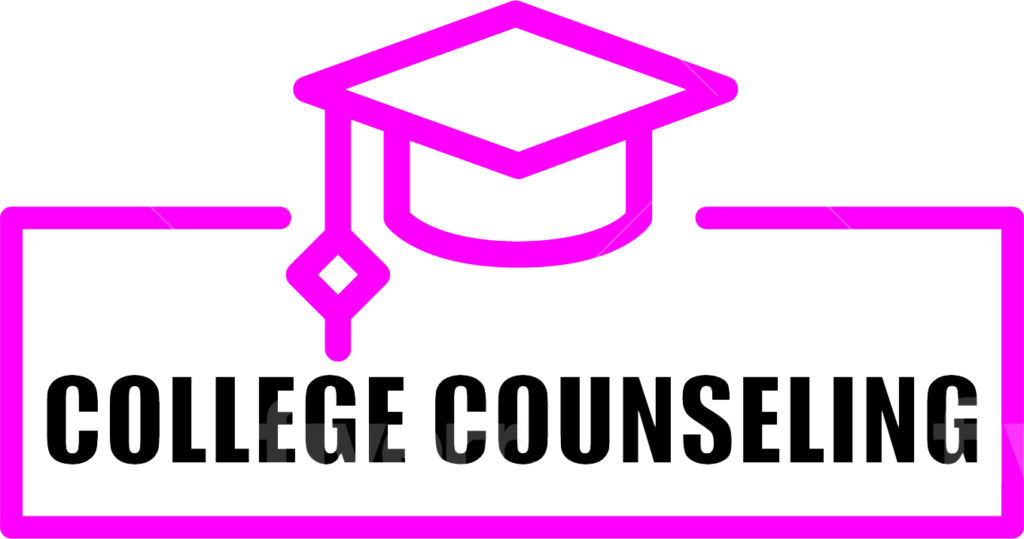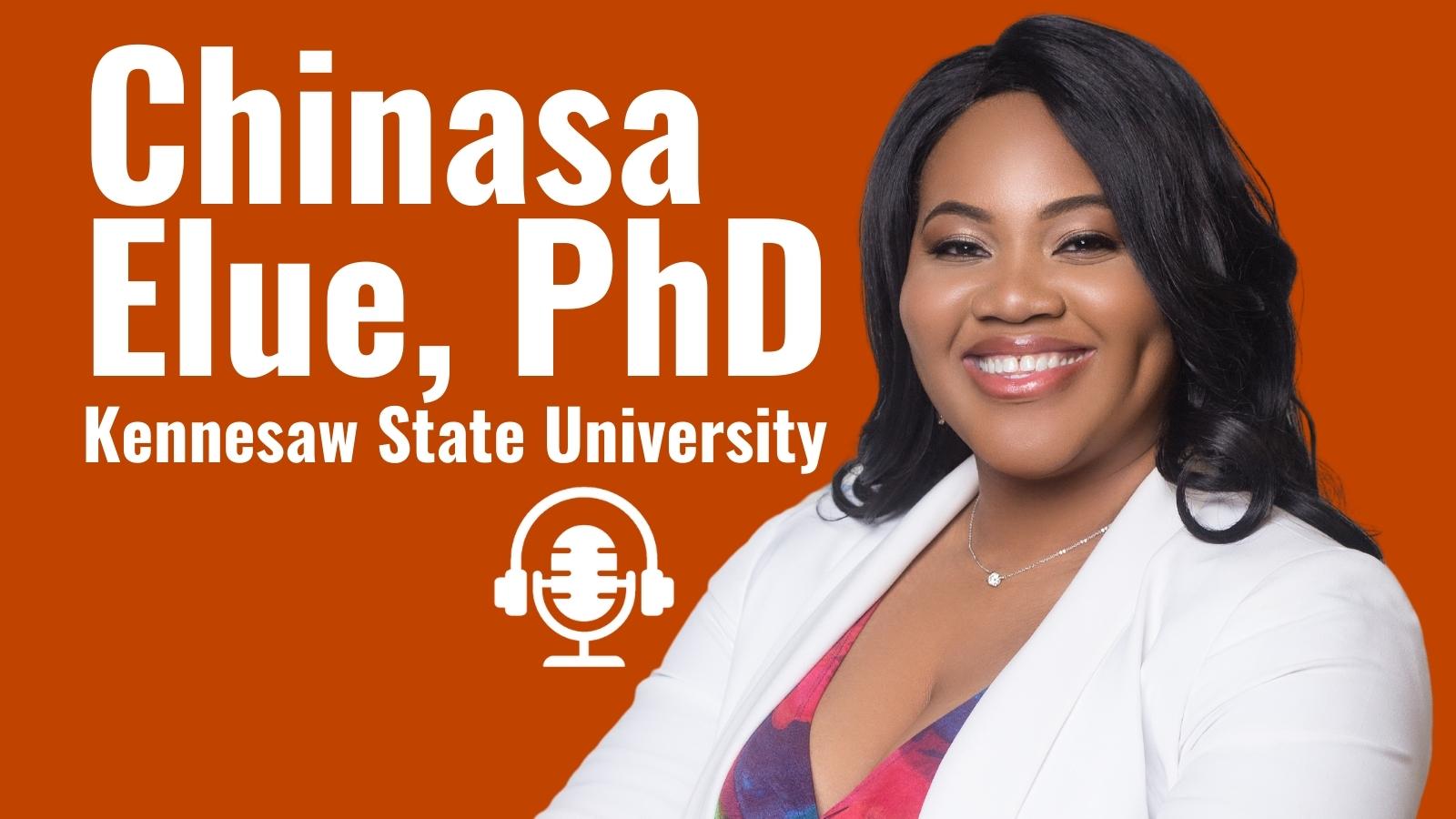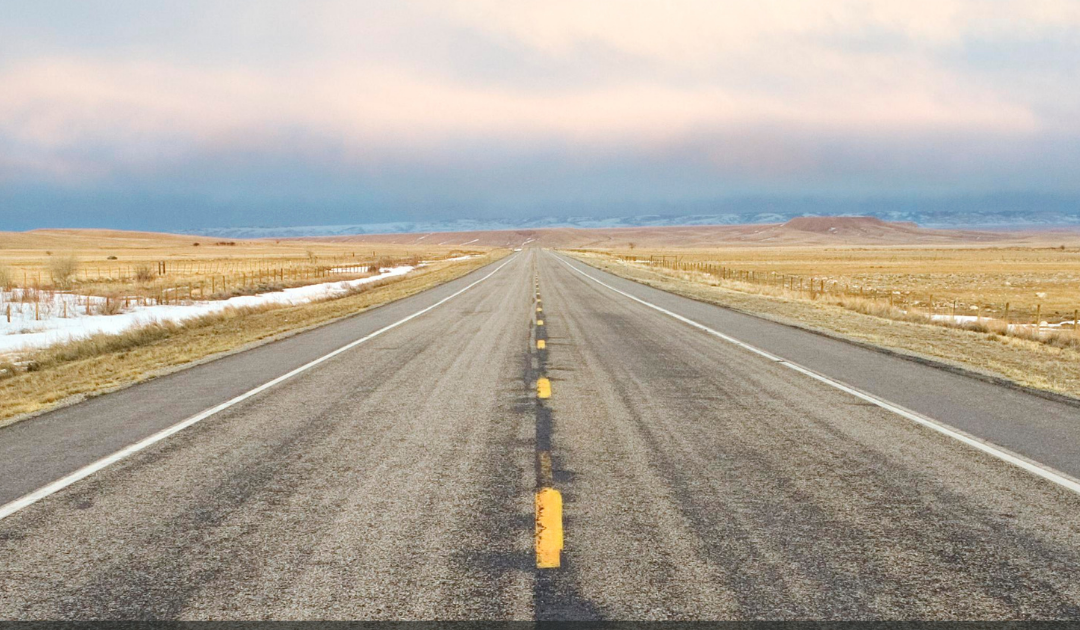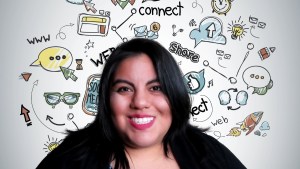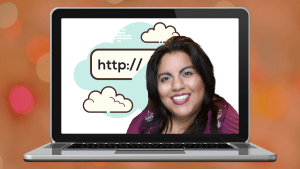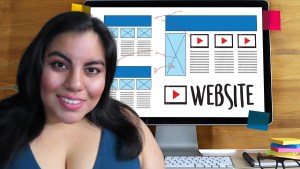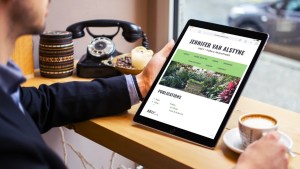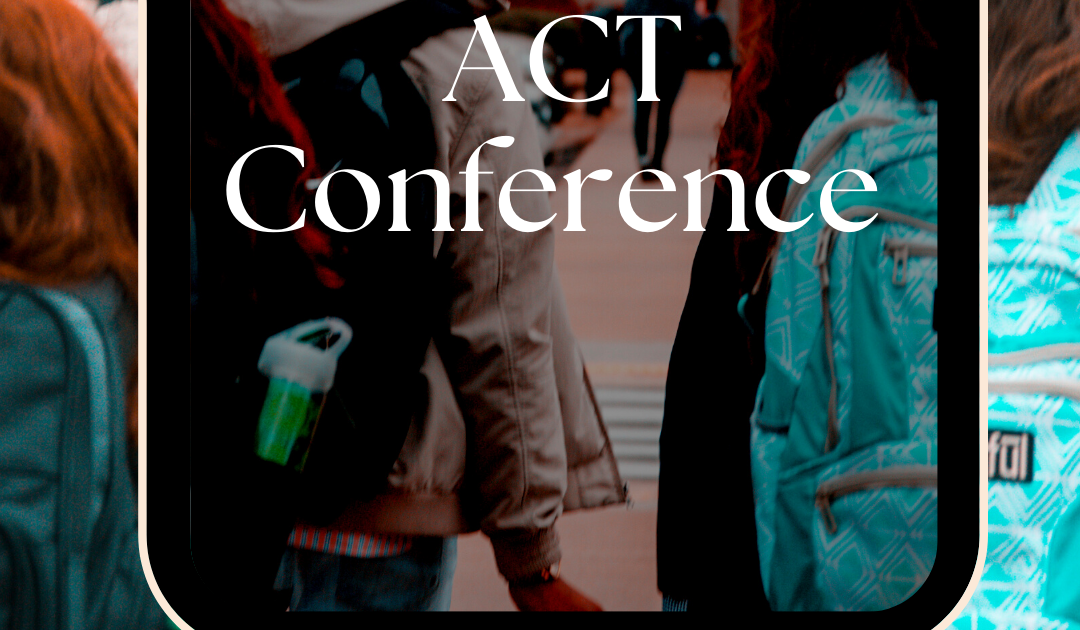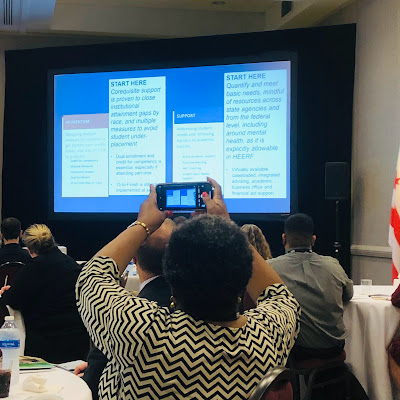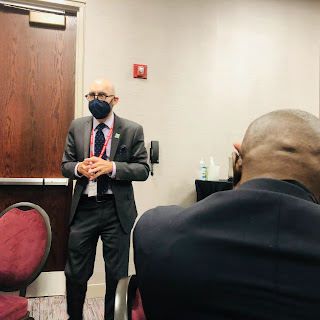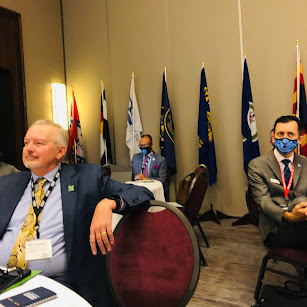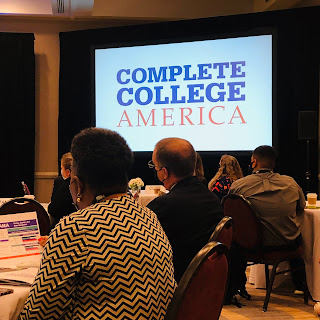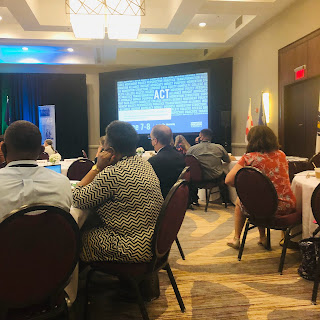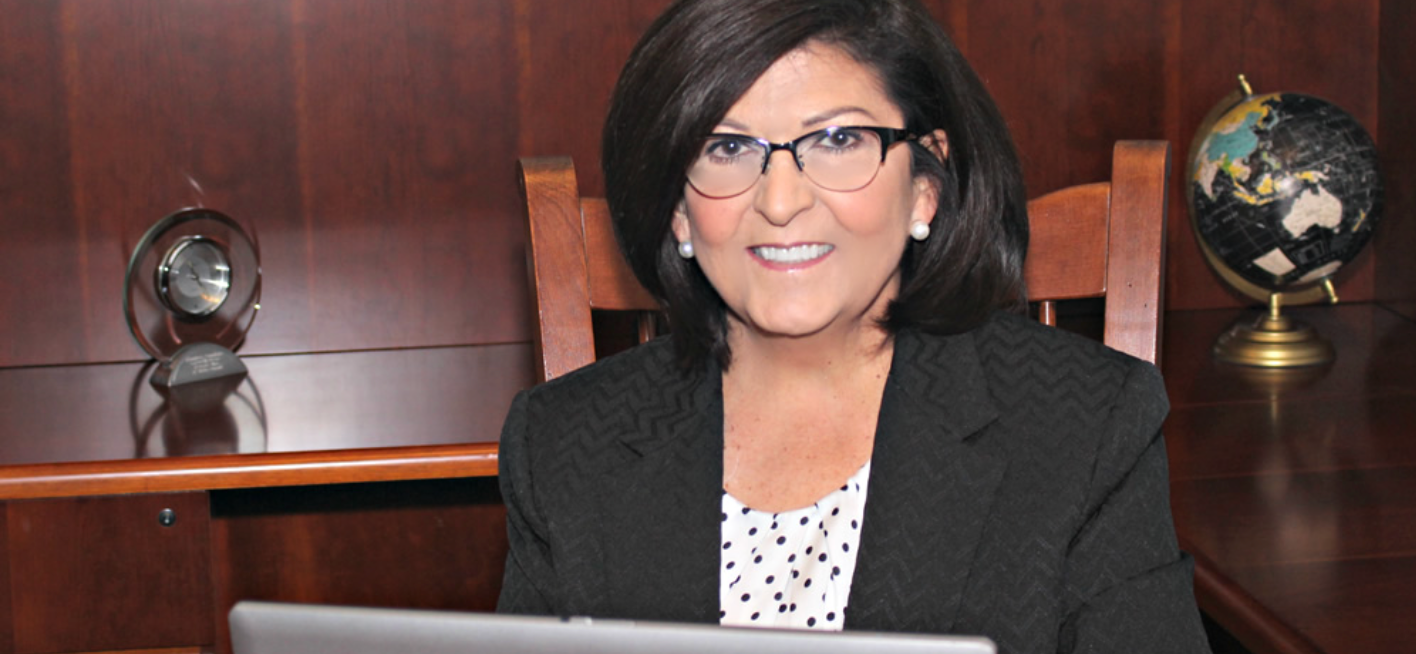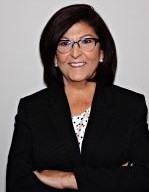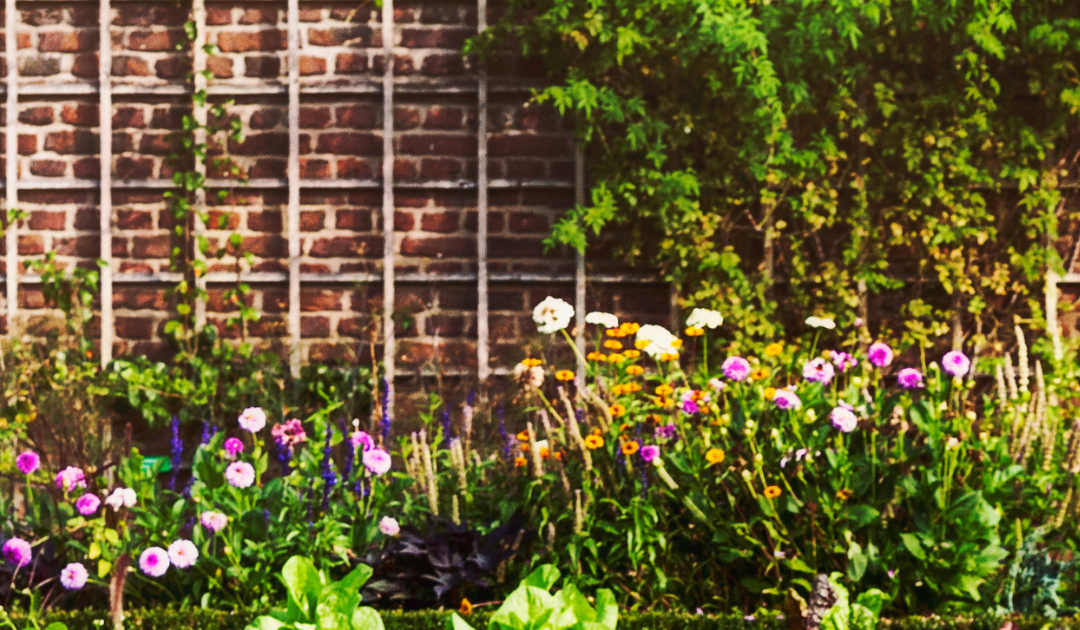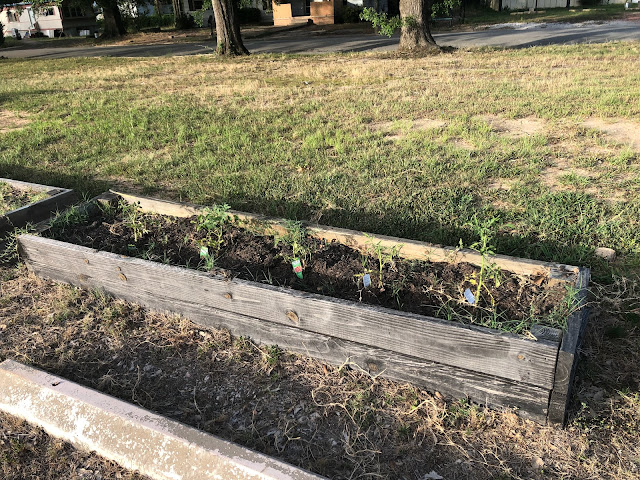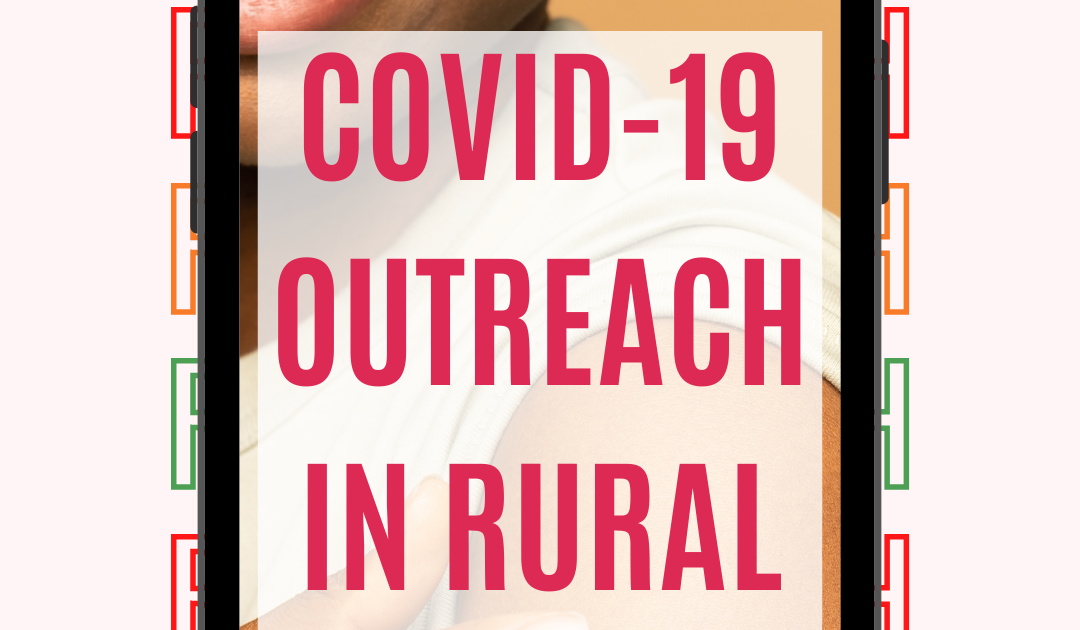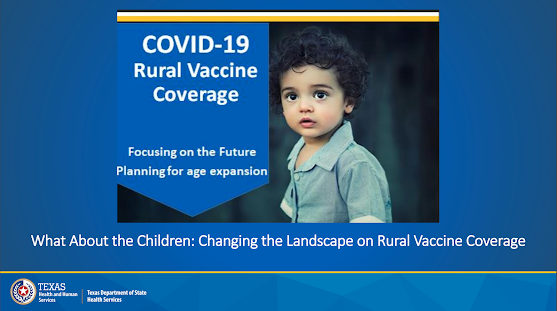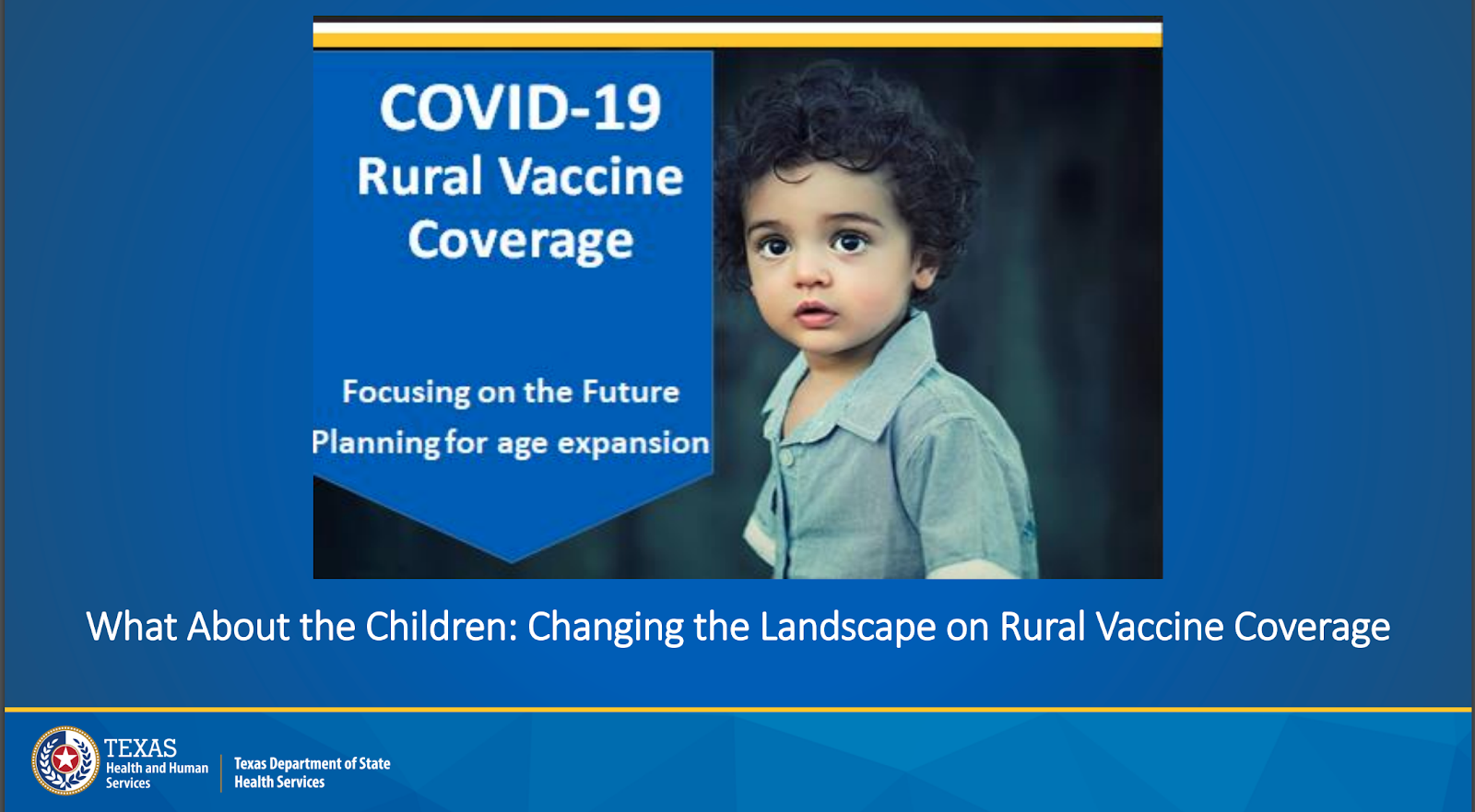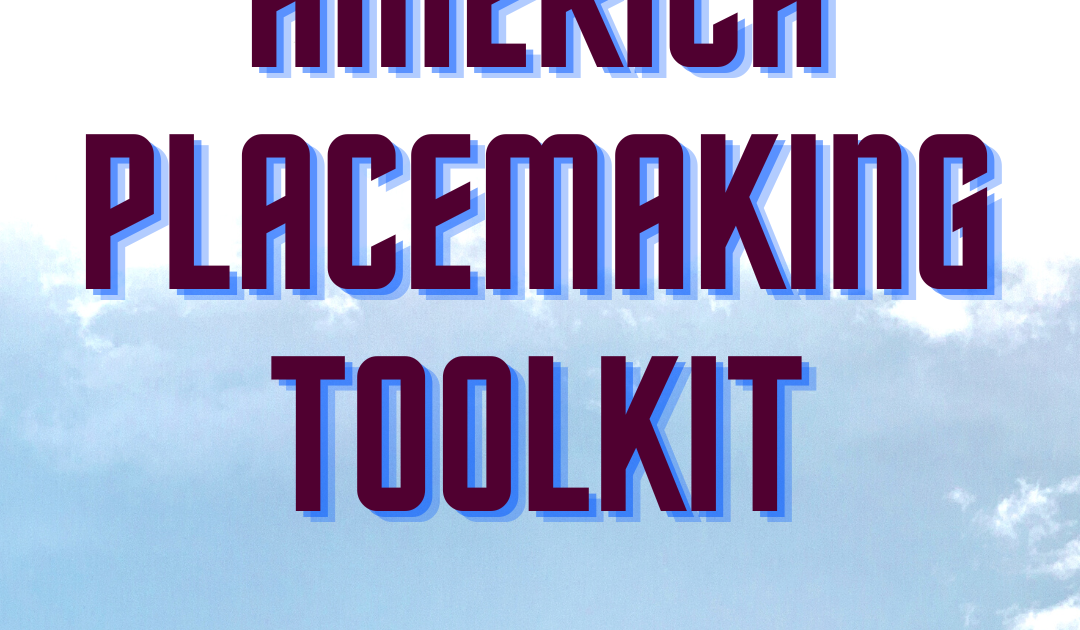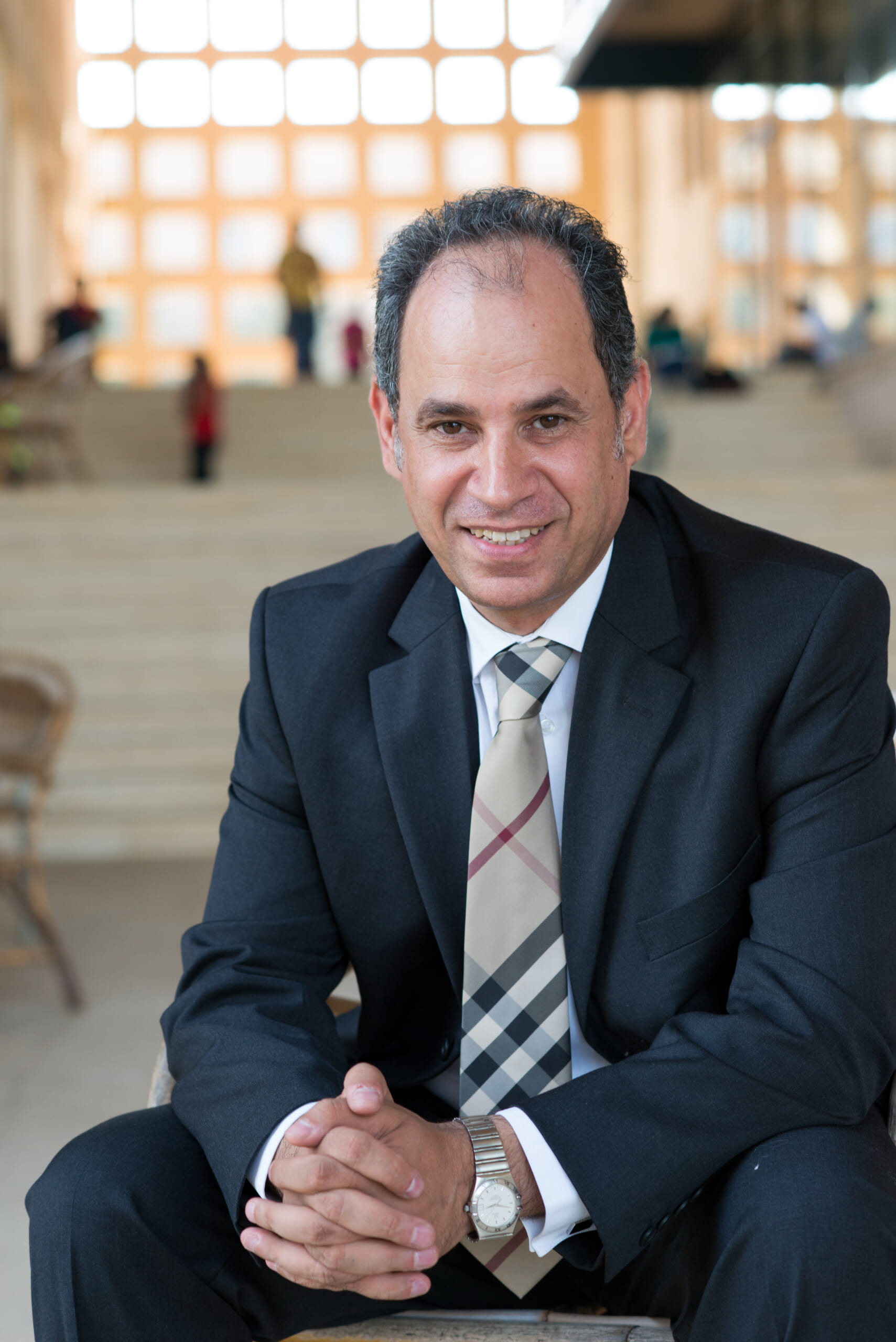Chinasa Elue, PhD is an Associate Professor at Kennesaw State University where her focus is Educational Leadership and Higher Education. She is also an entrepreneur. Her company, True Titans Consulting is helping leaders and organizations with grief and trauma.
How do you express grief, express loss, online? In this interview, Chinasa gets personal about the loss of her mother. Dr. Elue knows that we’ve been experiencing collective grief.
Welcome to the featured interview series on The Social Academic blog. You can read, watch, or listen to the interviews shared here.
Subscribe to The Social Academic blog.
The form above subscribes you to new posts published on The Social Academic blog.
Want emails from Jennifer about building your online presence? Subscribe to her email list.
Looking for the podcast? Subscribe on Spotify.
Prefer to watch videos? Subscribe on YouTube.
Meet Chinasa
Jennifer: Hi everyone. My name is Jennifer van Alstyne. Welcome to the new season of The Social Academic. I’m here with Dr. Chinasa Elue, an associate professor of educational leadership and higher education at Kennesaw State University.
Chinasa, I’m so happy to talk with you today. Would you please introduce yourself? Let everyone know a little bit about you.
Chinasa: Absolutely. And so thank you so much for having me here today, Jennifer, I’m excited to be here and chat with you as well.
My name is Chinasa Elue. As you mentioned, I’m a professor at Kennesaw State University, but I’m also an entrepreneur. I run my own coaching and consulting business where I am supporting organizational leaders lead with more trauma informed practices in the workplace.
A lot of this work stems from our research around grief, leadership and trauma informed practices in organizational settings. I’m excited to be doing this work. It’s truly an honor to be able to leave such important work in this context that we’ve been navigating these past couple of years. Thank you.
Jennifer: Yeah, thank you for introducing that and letting people know about your business. And I think that’s so important. One of the reasons that I want to highlight professors like yourself on the show is to show that people are doing more than just their faculty work. People are helping the world in different ways.
Journey into the professoriate
Having an online presence is something that becomes a part of that system for helping people. That’s one of the things that I wanted to talk with you about today.
Now, since most of the people who are listening to this are professors themselves, can you tell me a little bit more about your higher ed life?
Chinasa: Absolutely. So in terms of my journey into the professoriate is really interesting because in a lot of ways, when I was finishing my graduate program, I thought I was going to go into higher education administration. I thought I was going to work as the Dean of Students or something of that nature.
But as you know, along the way, I had some really amazing mentors who really encouraged me to pursue a faculty life. They talked about the importance of impact in the field more systemic ways. I applied to many jobs and I was able to land my first gig right out of graduate school teaching.
I think being a professor…It’s a journey in and of itself, right?
There are a lot of ins and outs of this thing that I’ve learned over time. I’m getting ready to enter into my 8th year of teaching. I can’t even believe I’m saying that, but yeah, 8 years of teaching as a professor.
It’s been an interesting journey. That’s the best way I can put it, because there are a lot of reasons why I’ve chosen to navigate my career in the ways that I have. Especially with my experiences and academe in general as a woman of color.
That shaped and informed why I chose to not only be a professor, but also be an entrepreneur because I recognize the importance of having more systemic impact outside of my 9-to-5 job.
I think it’s important to think about to what extent can you really enact change or have a more positive force in that context. I realized that for me, it needed to step outside of the ivory tower and look different in a lot of ways.
Finding your voice on social media

Jennifer: It sounds like you realize that you could help more, that you have that ability and that you knew that you needed to do something. Like you needed to give more of yourself into a different area.
That’s something that an online presence is so helpful for, because we can’t always communicate with everyone all the time. Right? There’s not people around like introducing themselves, “Hi, let me learn more about you.” But there are online. There are people who are looking for help in different areas.
There are also professors who are looking to connect with other professors, you know, working in higher education. And I think that that online presence can be really beneficial in that, in that kind of system of communication.
So what does your online presence look like? What are some of the things that you do to have an online presence?
Chinasa: You know, it’s so interesting when we talk about online presence as a professor, right? In a lot of ways, I see a lot of faculty on Twitter. I think that’s the place of choice in a lot of ways where we’re able to share ideas more broadly.
But I also know at the same time, one of my own pieces with building my online presence is also honing in on my voice and how I wanted to communicate information and in what ways I wanted to share that. And also letting my personality shine. Right?
I think in a lot of ways, it’s very easy to be kind of cut and dry. Being very professional, which I am, but I’m also in a lot of ways, I bring in a lot of humor.
And so what I like to do online, I don’t mind sharing. If it’s Twitter is more professional or whatnot, sharing
- Research updates
- Recent awards
- Accolades
- Conversations that are going on locally and in the world at large
But Instagram is kind of where I have a little bit more fun. I share a little bit more personally in that space.
I also have my own YouTube channel where I’ve done videos and those kinds of have a humorous bent to them as well. Humorous but also informative at the same time. I’ve done a lot of work around career coaching and supporting professionals in various spaces professionally. I wanted to bring some humor into a space of times that can be very dry.
And oftentimes where we also have a lot of traumatic experiences in our respective industries that we may not talk about, but I want it to highlight it and make it a little bit more light and palatable so that we can have more systemic conversations.
My preference just looks different depending on the platform, to be honest.
Jennifer: I really like that. I think that it makes a lot of sense to have different audiences, but also different types of content that you share on each platform. And it really is based on your goals.
Free online presence workshop
Get started for in this virtual choose your own adventure workshop for professors, researchers, and graduate students.
It sounds like you have fun on Instagram. You share those kinds of motivational and short videos on YouTube. That can really help people connect with you. And then the more professional side is on Twitter. Is that right?
Chinasa: Yes. Correct.
How much do you share about yourself online?
Jennifer: Well, I think that it’s really important for people to recognize what they’re interested in in terms of
- where they want to share
- what they want to share
- how much they want to share
So that’s my next question. How much do you share online about yourself?
Chinasa: I think I share what I feel comfortable sharing. Right? I don’t use online as my journal entry point.
Jennifer: Yeah.
Chinasa: I don’t come in there to narrate my initial reactions to anything.
I talk about this often when I’m talking to friends or colleagues that whenever there’s a hot button topic, where there is a decision or a case or an event that’s happened…
A lot of times, people will flock online to share their initial reactions or emotions.
Jennifer: They love to do that. It’s like a gut reaction to go and talk about your feelings about something. For sure.
Chinasa: Yeah! But I realized that that in a lot of ways it doesn’t serve me well, personally. That I need time to be in community with people that I talked to more systemically and consistently to really process the events.
Because a lot of times it’s something that’s near and dear to your heart, right? These are some really hot topics that are going to impact me, my children, my family for generations to come.
I realized in a lot of ways, I don’t want to just contribute a hot bite and not then take action.
My reaction is just to not necessarily go online, but to pick up a phone and get in touch with someone where I can process more systemically. And then, make a post that I think could contribute in a more meaningful way.
It just serves me better. And I think in a lot of ways, I don’t want people to come to me and try and take a sound bite without knowing the true impact that this is going to have long-term. So I process, and then I share within reason in terms of what I feel comfortable sharing.
Sometimes I don’t [post]. Sometimes I write a blog. Sometimes it drives me to do research, or to do an article, or something else. Right? But I am more intentional about not emoting outwardly first, but being more reflective in nature.
Jennifer: Oooh, I really like what you said about how that time to reflect and to actually talk with people who you’re close with about the experiences and the things that are happening. It really allows you to focus your energy in your reaction to that. Either, either it goes into social media, but it has all these other options too, which a lot of people don’t consider when they have a gut reaction to something that they’ve experienced.
I like that, you know, that could be channeled into research or into a blog post, like into these different forms of reaction. So I really like that. Thank you for sharing that.
Chinasa: Absolutely.
We are walking through collective trauma

Jennifer: Now, one of the things that you talked about is that you share things that you feel comfortable with online.
And I know that grief is something that we’ve all been dealing with collectively recently, but you yourself have lost your mother. That’s something that you’ve been able to talk about online and even connect with people about. Can you tell me a little bit about that?
Chinasa: You know, I never thought that I would be doing research on grief. That wasn’t my initial mo (modus operandi) when I came into the professoriate at all. I was initially studying issues of access and equity to higher ed.
I lost my mom in may of 2019. And when I lost her, that was the first time I’ve lost someone so close in proximity to me. The loss in and of itself was so debilitating in ways I can’t even describe to be honest.
So when I think about being in that space a year before we knew a pandemic was looming ahead. Right? Losing my mom, and having young children at the same time and figuring out how to navigate being a faculty member and being all the other things that I do on a daily basis…It was a really trying time to be frank.
Coming into the pandemic it was almost like I had an awakening of sorts. Right? We started to see loss on a massive scale in the midst of our racial reckoning in this country that’s still ongoing [United States], the social political climate that has continued to traverse even until now.
I recognized that what we’re walking through at the time was collective trauma and collective grief.
I felt a prompting to begin to ask some deeper questions. As a higher ed researcher, I wanted to know how are institutional leaders responding to loss right now? Because I know how debilitating the was for me before a pandemic, before all of the other factors were there, to navigate that.
But let’s say you lost someone due to COVID. Right? And maybe, perhaps you’re a person of color or any other dimension of your identity that’s been impacted by any number of it. You name the headline, it’s present today. Okay?
Based on where you’re socialized in this world and in this country specifically, it really impacts how you’re able to show up every day.
People are quick to move back to a normal or ‘a new normal,’ which is what we keep hearing now that the pandemic is over, which I beg to differ, honestly, but we’re here.
In a lot of ways, if you lost someone during these past 2.5 to 3 years, and then have to face any number of events…The ways in which you’ve had to navigate and cope have had to vary based on who you are in this country.
How are organizational leaders responding to grief?
Chinasa: I wanted to know how leaders, especially as a higher ed scholar, how are leaders responding?
How are you providing space to
with your faculty, staff and students who have experienced traumatic loss? Who are showing up on your campus and they’re not the same person they were before the pandemic, right?
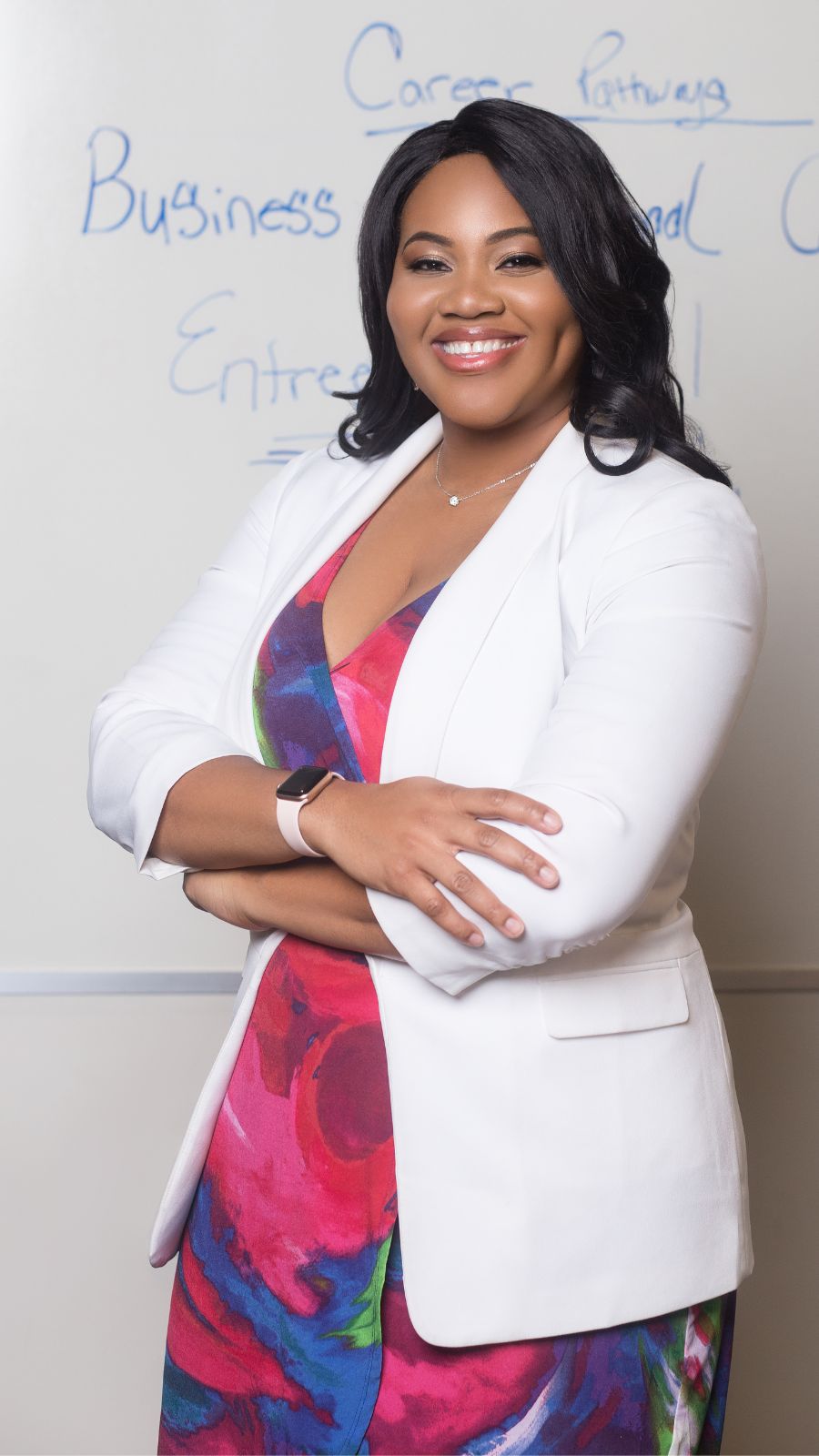
These are not the same people that are returning back to us. And so when I think about grief now in this context, I think we’ve been in prolonged grief. There’s been just so much that has gone on, and it’s been such a trying season to be in right now where we are trying to figure out how to pick up our feet and move forward. But at the same time, we keep getting knocked down every step that we take. Right?
And so in this context, it’s more so okay, how do we continue to create spaces that allow us the opportunities to process the ongoing traumatic onslaught of grief that we’re seeing unfold day in and day out. There is no reprieve right now.
The conversations have to look different.
The events that we’re hosting the organizations that we’re building have to look different because we have to be more intentional about how we are creating spaces for people to show up in their true authenticity, but still be able to thrive.
And to not care about the bottom line, but to honestly care about the individual 1st –before you care about the deadline, the project, the goal at hand. But to know that these are real people that need a real leader to recognize them for the totality of their humanity. They want you to see them.
I think one big piece about The Great Resignation that we’re noticing right now is that people are leaving because they want more, they desire more. They realize that they’re worthy of more.
If leaders wake up to the fact that your employees, your colleagues don’t want to be seen as a bottom line item, they want to be seen as a human being who has been experiencing trauma and loss. Then you have to respond differently. Because if you don’t, this is going to be an ongoing situation that we see for many years to come.
Jennifer: Hm. That was a lot. What it sounds like is that your own grief helped prompt this research that is hopefully going to make this bigger impact on universities around the world and on organizations too. I mean, trauma is something that every company and every organization is dealing with because people are collectively grieving. You’re right.
Talking about the loss of her mom on social media

Jennifer: Now what does that look like with social media for you? Like, you’ve been able to talk about some of your grief on social media. And I’m curious how that’s been. What have people’s reactions been? Have you been able to make connections based on that shared grief?
Chinasa: Absolutely. I think social media, you know, it’s the catch 22 with it, right? It’s a great connector in a lot of ways. You’re able to build a community and networks in that vein. It could be a big detractor at the same time with differing opinions. And then the armchair bullies that show up every now and then, right?
Jennifer: Oh, yeah.
Chinasa: Yeah. For me, personally, I’ve been able to talk about grief in a very authentic and raw way.
I don’t shy away from it because grief is, in my opinion, the final act of love. We’ve loved people deeply. And so we’re going to grieve them deeply. And grieving looks different for any person. For me, I’ve chosen to be more public and sharing my emotions and how I’ve been processing things.
don’t run to Instagram or Twitter as my journal to share. But I share things that I’ve processed through
- Events
- Milestones
- Holidays (i.e. Mother’s Day)
- Cooking my mom’s favorite recipe
I’m just remembering those times. I have no issue sharing a picture of her because she’s so near and dear to me, I think about her every day. I think in a lot of ways, I also use social media as a way to memorialize her. To let people know that she was here because it’s very easy to want to power ahead, but that person still lives in a very present part in my heart. My mom does for me, right?
And I think for those who are experiencing loss and being able to share my experiences online and saying that it’s okay. That it is three years later and I’m still grieving. Right? That there’s no timeframe here that you have to give yourself the grace and the space you’d need to
- Process
- Emote
- Take your time
- Slow down as needed
And I think it’s a space to gain encouragement when you’re walking through something similar and to connect with others who are on the same path.
Because I’ve been able to make those connections with others who have lost parents, who’ve lost, loved ones who understand and who send me messages, or we connect offline and are able to talk more systemically.
I think that’s a big piece there with leveraging social media when you have different events happen. You can use your online presence to have more personal conversations that are meaningful to you. And also, still have impact by providing encouragement and space to have dialogue that may not exist outside of those online virtual walls. And so I appreciate that about social media for that, for sure.
Jennifer: Chinasa I really appreciate that. And for anyone who’s listening, who is experiencing grief right now, but maybe you’re not so sure how much you want to post about it online, or if you want to reach out to people that way. Remember that you can also use direct messages and actually have those kinds of private conversations about this through social media as well.
So there are many options for talking about grief, but it sounds like Chinasa has gotten a pretty positive response from being able to open up about her mom and the grief that she’s felt online.
Chinasa: Absolutely. And I think in a lot of ways, people are like, well, nobody wants to hear about this anymore. She’s been gone for some while. Right? Like we sometimes get in our own heads and feel like we need to emote or share for other people.
But I put that to the shelf. I think you have to just come out. A big piece of me sharing is also me being honest and authentic. I don’t show up every day just smiling, like the world is glorious and good.
Like it is, right? Some days.
But there are days where I’m really in the pits with grief. And I might feel that to share so that people understand that this is a process. You don’t have to beat yourself up if you don’t feel like you are where you thought you would be a year from now, two years from now.
I think in a lot of ways, it’s great to serve as a possibility model for others who are probably in the beginning stages or midway through who are wondering, will it get better again? Or what does this look like?
You know, we all grieve differently. Right? All I can do is model my process.
I may share more than another person, but I think in a lot of ways that sharing does open up the doors for more prolonged conversations that I think honestly needs to happen more, especially when we think about people die every day. Every day.
And if we can’t talk about death, which is a natural part of life, then when will the conversation ever happen? If we can’t talk about it at work, we can’t talk about it at home, or with our friends or loved ones. Like we have to talk about it because we will all unfortunately experience this.
I think the online community provides a great outlet to have a space to do it.
Jennifer: I’ve lost both my parents. I think the grief has been a long journey. My mom died about 20 years ago and my dad 15 years ago. And I’m still processing it.
Chinasa: Yes.
Jennifer: It doesn’t go away. It doesn’t stop. And being able to talk about it has been something that has been so healing for me.
I think the only reason I haven’t done it online is because so many of the people who knew them have also passed. They were quite a bit older when they adopted me.
And so I think that kind of like public remembrance, that public memorial that you say is part of some of the posts that you do, it’s just so beautiful. I love that. I’ve seen that before, but I don’t think I’ve ever heard anyone talk about what that feels like for them. And what posting about, you know, your mom’s cookies makes it feel like when you post. And so I really liked that. Thank you.
Chinasa helps people who are experiencing grief

Jennifer: Now, tell me a little bit more about your business because your business is now helping some people who are experiencing trauma. Both individuals and organizations, is that right?
Chinasa: Yes. I’m so excited about the work that I’m doing right now with organizations. I’ve had the opportunity to be able to talk more in detail with leaders who are looking for ways to perhaps set the stage for these conversations that I’m talking about right now.
I think if I were to say the most rewarding part of being an entrepreneur in this space, academic entrepreneur of this kind, I think in a lot of ways is being able to leverage your research to do the work. But then also to realize that there are more practical ways to implement it across different organizations and systems. The entrepreneurial route has been very affirming in a lot of ways and very encouraging to me to be able to step out and do this more systemically.
I offer talks to different organizations based on what their needs are, how they want to engage in the conversation.
I’m open and transparent. I bring the research with me. I’m sharing with them real time data because I think at times people need to know. They need to know the statistics. They need to know the experiences of others.
And then they also need to provide the space for those within their organizations to now begin to talk about, well, how do we perhaps cultivate something like this for ourselves? I appreciate that space to be able to do this work in this context.
In the same vein, I also offer grief coaching and grief circles. [Laughs]. I’m laughing because I never thought I would offer that. I never thought that I would be in the space or the head space to do it.
But it was so ironic. At the height of the pandemic, a good friend of mine asked me to start leading grief circles for her organization.
I hesitated at first because you know, in a lot of ways, as an academic, you feel like you need to have all the certifications and credentials under your belt.
In order to step out and do it, but I’ll be frank and say, I started to do it and engage in the work and it has been some of the most eyeopening and rewarding components of what I’ve been able to do since.
To be frank, it’s an absolute honor to be able to support people in this capacity. It’s a tough space to be in. It is a hard place to, you know, step outside of oneself and make yourself available to support others in their journey. But at the same time, it has been absolutely rewarding to see people find what they need in that space at the same time.
I don’t come to it as the guru or the person that’s bringing everything. I come to it as a supportive guide to help people, as they’re thinking through and navigating their own loss. And to think about perhaps how they may begin to forge a path way forward.
A lot of times we just feel stuck. We feel stuck. We don’t think we are going to ever be able to pick up our feet and move one in front of the other.
But when you’re in spaces, when you choose to not isolate, and you get into community with people, I think that is where we’re able to begin to make some semblance of meaning from the gravity of it all.
It’s a lot, but we have to find ways to just think about how may I perhaps begin to move forward. Not necessarily leaving the person in the past by carrying them with you in your heart. And doing things that are intentionally honoring them in yourself along the way.
Jennifer: Oh, that’s beautiful.
I’m so glad that we talked about this because so many people are grieving right now and holding it in. And just trying to stay strong for themselves, for their families to keep moving forward.
And sometimes you just can’t. Sometimes moving forward is just not something you can do on your own. And it’s not something that your family can help you do. Sometimes they don’t have that capacity. Sometimes you don’t have that capacity. But there is help out there. There are ways that you can move forward by working with other people by finding that community. And maybe by hiring Dr. Chinasa Elue as your trauma coach.
I know that I would need something like that. Now that I know that it exists, I wish I had that when I was younger. And I think other people will be glad to have heard you talk about it as well.
Chinasa: Thank you.
Be yourself online
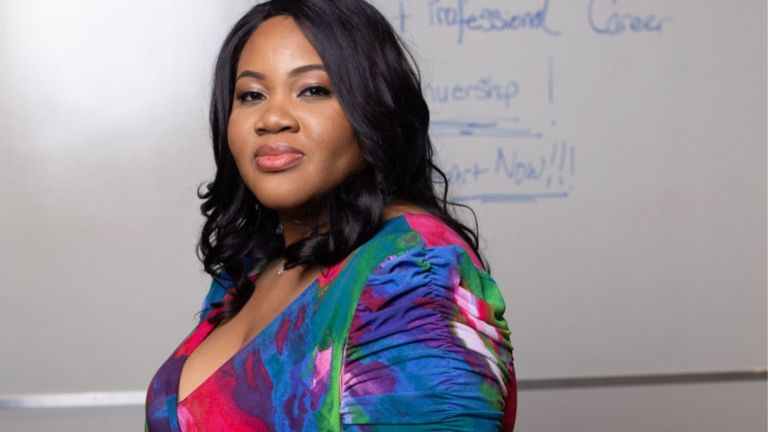
Jennifer: Well, this has been a wonderful conversation. Is there anything else you’d like to add about online presence, about your work, before we wrap up?
Chinasa: I would just say for those who are kind of on the edge of finding their voice online or putting themselves out there. I would just say it’s trial and error. Right? Don’t make it such a high stakes thing.
In a lot of ways, it does take time to find your voice. You’re going to mess up. You might say things…We always worried about getting canceled and the whole nine.
We have to think about perhaps how we might engage in conversations. Like I mentioned beforehand, when there’s a hot button issue that is on the docket for the day. Pick any day, there’s always something new, right? Thinking about our online behaviors is key before we begin to engage in those conversations.
What might we say that contributes in a meaningful way? I don’t like to fan the flame perhaps, but I do like to contribute in ways that provide solutions in a more sustainable way towards action. I think thinking about how you want to engage is key.
And then we think about who you are as a person. We’re not static people, right? There’s depth and range to who we are individually. Let your personality shine forth. That’s the secret sauce. Be yourself.
I think I’ve gotten really comfortable in my skin. I share what I share because it’s who I am, right? And it may not be everybody’s jam, but for me, my jam is just fine. And that’s just the way I choose to present myself.
So if someone is thinking about perhaps ways to express themselves online. I would just say lean into you. Do you. Okay? They can’t go wrong.
Jennifer: Oh, I love that.
Chinasa: Yeah, you can’t go wrong.
Jennifer: Just be you.
Well thank you so much! Be sure to share this interview with your friends.
Subscribe to The Social Academic blog.
The form above subscribes you to new posts published on The Social Academic blog.
Want emails from Jennifer about building your online presence? Subscribe to her email list.
Looking for the podcast? Subscribe on Spotify.
Prefer to watch videos? Subscribe on YouTube.
Bio for Chinasa Elue, PhD
Dr. Chinasa Elue is a professor, speaker, coach, and the CEO and Founder of True Titans Consulting Group. She is an expert on grief leadership in higher education and trauma-informed practices in organizational settings. She supports leaders in moving forward to make impactful change in the midst of uncertainty with empathy and care. She provides strategic coaching and consulting that opens the doors to transformation through policy and practice. She hosts Grieving in Color, a podcast that explores the various ways we navigate our experiences with grief and loss and a place where we find the courage to intentionally heal in our daily lives.
Dr. Elue is an Associate Professor of Educational Leadership and Higher Education at Kennesaw State University. She leads the Research Lab for the Study of Emotional Intelligence, Leadership Effectiveness, and Well-Being of Educational Leaders.
Connect with Chinasa on social media @DrChinasaElue.
